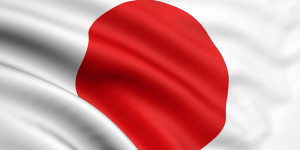The Japanese yen continues to have a quiet week and has posted small losses in the Tuesday session. In the North American session, USD/JPY is currently trading at the 102 line. On the release front, Japanese Preliminary Machine Tool Orders posted another sharp decline. Later in the day, Japan releases the Producer Price Index, which measures inflation in the manufacturing sector. The markets are braced for a sharp decline of 4.0%. In the US, there are no major events on the schedule. Preliminary Unit Labor Costs declined 0.5%, while Preliminary Nonfarm Productivity posted a gain of 2.0%.
The Japanese current account surplus jumped to JPY 1.65 trillion in June, up from JPY 1.45 trillion a month earlier. This figure beat the forecast of JPY 1.60 trillion and marked a 3-month high. If the yen continues to strengthen, however, we could see lower surpluses. Last week, Prime Minister Shinzo Abe’s cabinet approved a JPY 28 trillion stimulus plan, and the yen posted some gains before retracting. The package includes JPY 13.5 trillion of fiscal measures, with new spending to commence this year. Will this be enough to kick-start the languishing economy and boost inflation? It will be a tough task to convince the Japanese consumer, who remains deeply pessimistic about the economy and will be reluctant to loosen her purse strings. The government is getting little more than moral support from the Bank of Japan, which has refrained from utilizing its major monetary tools – lowering interest rates or expanding its asset-purchase program. Is the BoJ out of monetary ammunition? If so, the yen could gain more ground and move closer to the symbolic 100 level.
US employment numbers sparkled on Friday, led by Nonfarm Employment Change. The July report surprised the markets with a huge gain of 255 thousand, crushing the estimate of 180 thousand. This release follows the outstanding June reading of 280 thousand. US wage growth has been a soft spot in the robust labor market, but there was positive news as Average Hourly Earnings gained 0.3%, edging above the forecast of 0.2%. As well, Unemployment Claims remained steady at 4.9%. What will the Federal Reserve do with these numbers? Prior to the payrolls release, a September hike was virtually off the table, especially in light of the soft US GDP report in late July. The Fed has made no secret of the fact that any rate move will be data-dependent, and the stellar job numbers will force to Fed to give serious thought to a move in September. Employment and inflation releases in the next few weeks will be critical factors in determining if the Fed makes a move next month, or revisits the rate question in December.
USD/JPY Fundamentals
Monday (August 8)
- 23:45 Japanese 30-year Bond Auction. Actual 0.42%
Tuesday (August 9)
- 2:00 Japanese Preliminary Machine Tool Orders. Estimate -19.6%
- 6:00 US NFIB Small Business Index. Estimate 94.5. Actual 94.6
- 8:30 US Preliminary Nonfarm Productivity. Estimate +0.5%. Actual -0.5%
- 8:30 US Preliminary Unit Labor Costs. Estimate 1.8%. Actual 2.0%
- 10:00 US IBD/TIPP Economic Optimism. Estimate 46.2
- 10:00 US Wholesale Inventories. Estimate 0.0%
- 19:50 Japanese Core Machinery Orders. Estimate 3.4%
- 19:50 Japanese PPI. Estimate -4.0%
*Key events are in bold
*All release times are EDT
USD/JPY for Tuesday, August 9, 2016

USD/JPY August 9 at 11:20 EDT
Open: 102.28 High: 102.53 Low: 101.81 Close: 101.93
USD/JPY Technical
| S3 | S2 | S1 | R1 | R2 | R3 |
| 98.95 | 99.71 | 101.20 | 102.36 | 103.73 | 104.99 |
- USD/JPY has shown limited movement in the Asian and European sessions. The pair has posted slight losses in the North American session
- 102.36 was tested earlier in resistance and is a weak line
- 101.20 is providing support
- Current range: 101.20 to 102.36
Further levels in both directions:
- Below: 101.20, 99.71 and 98.95
- Above: 102.36, 103.73, 104.99 and 105.87
OANDA’s Open Positions Ratio
USD/JPY ratio is showing gains in short positions on Tuesday. Currently, long positions have a strong majority (66%), indicative of trader bias towards USD/JPY breaking out and moving to higher ground.
This article is for general information purposes only. It is not investment advice or a solution to buy or sell securities. Opinions are the authors; not necessarily that of OANDA Corporation or any of its affiliates, subsidiaries, officers or directors. Leveraged trading is high risk and not suitable for all. You could lose all of your deposited funds.
